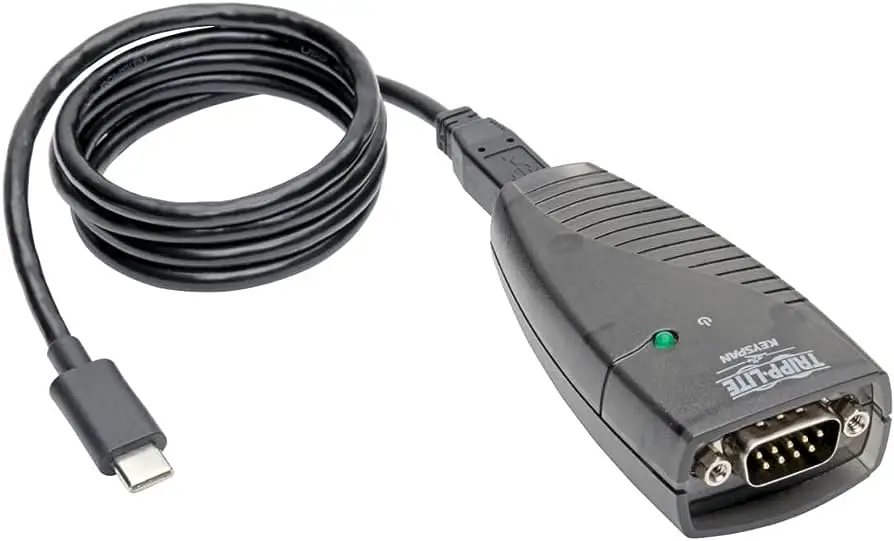How does a USB-C to Serial adapter work?


USB-C to Serial adapters, also known as USB-C to RS232 or USB-C to TTL adapters, are essential tools for connecting devices that use serial communication to a computer or other devices with a USB-C port. These adapters allow for easy and convenient data transfer between devices, making them indispensable for professionals and enthusiasts who work with computer peripherals and other devices that use serial ports.
Understanding Serial Communication
Before delving into how a USB-C to Serial adapter works, it is important to understand the basics of serial communication. Serial communication is a method of transferring data between devices one bit at a time. It involves the use of a serial port, which is a hardware interface that allows for the transmission and reception of data.
Serial communication has been widely used for decades and is still prevalent in many industries. It is commonly found in devices such as modems, GPS receivers, barcode scanners, industrial equipment, and more. These devices often use RS232 or TTL standards for serial communication.
What is a USB-C to Serial Adapter?
A USB-C to Serial adapter is a small device that converts the USB-C interface to a serial interface, allowing devices with USB-C ports to communicate with devices that use serial communication. It acts as a bridge between the USB-C port on a computer or other device and the serial port on the peripheral device.
How Does a USB-C to Serial Adapter Work?
A USB-C to Serial adapter works by converting the data signals between the USB-C and serial interfaces. Here is a step-by-step explanation of how it works:
1. USB-C Cable Connection: The USB-C to Serial adapter is connected to the USB-C port on the computer or other device using a USB-C cable. The USB-C cable provides both power and data transfer capabilities.
2. Serial Port Connection: The other end of the USB-C to Serial adapter is connected to the serial port on the peripheral device using a serial cable. The type of serial cable required depends on the specific serial standard used by the peripheral device, such as RS232 or TTL.
3. Signal Conversion: Once the USB-C to Serial adapter is connected, it converts the data signals between the USB-C and serial interfaces. It translates the data signals from the USB-C port into a format that the serial port can understand, and vice versa.
4. Data Transfer: With the signal conversion in place, data can now be transferred between the computer or other device and the peripheral device. The USB-C to Serial adapter handles the data transfer process, ensuring that the data is transmitted accurately and efficiently.
5. Driver Installation: In some cases, the computer or other device may require a driver to recognize and communicate with the USB-C to Serial adapter. The driver is a software component that enables the operating system to interact with the adapter. It is usually provided by the manufacturer of the USB-C to Serial adapter and can be downloaded and installed from their website.
Benefits of Using a USB-C to Serial Adapter
Using a USB-C to Serial adapter offers several benefits, including:
– Compatibility: USB-C is a widely adopted standard, making USB-C to Serial adapters compatible with a wide range of devices that have USB-C ports.
– Convenience: USB-C to Serial adapters are compact and portable, allowing for easy connection and use with different devices.
– Versatility: USB-C to Serial adapters support various serial standards, such as RS232 and TTL, making them suitable for different types of devices that use serial communication.
– Data Transfer Speed: USB-C to Serial adapters can achieve high data transfer speeds, ensuring efficient and fast communication between devices.
– Plug-and-Play: Most USB-C to Serial adapters are plug-and-play, meaning they can be used without the need for additional software or configuration.
Conclusion
USB-C to Serial adapters provide a convenient and efficient way to connect devices that use serial communication to devices with USB-C ports. By converting the data signals between the USB-C and serial interfaces, these adapters enable seamless data transfer and communication. Whether you are working with computer peripherals, industrial equipment, or other devices that use serial ports, a USB-C to Serial adapter is an essential tool that simplifies the process of connecting and communicating with these devices.
Recent Posts
How do I create an engaging and informative online quiz or assessment?
Creating an engaging and informative online quiz or assessment can be a powerful tool for… Read More
What are the most effective methods for managing and reducing work-related stress in the hospitality industry?
Work-related stress is a common issue in the hospitality industry, where employees often face long… Read More
How can I improve my assertiveness and communication skills in a leadership position?
In a leadership position, assertiveness and effective communication skills are crucial for success. Being able… Read More
What are the key elements of a successful employee recognition and rewards program?
Employee recognition and rewards programs play a crucial role in motivating and engaging employees, as… Read More
How do I effectively manage and respond to customer feedback and reviews?
Customer feedback and online reviews play a crucial role in shaping a company's reputation and… Read More
What are the best strategies for effective time management as a stay-at-home parent?
Effective time management is crucial for stay-at-home parents who juggle multiple responsibilities on a daily… Read More